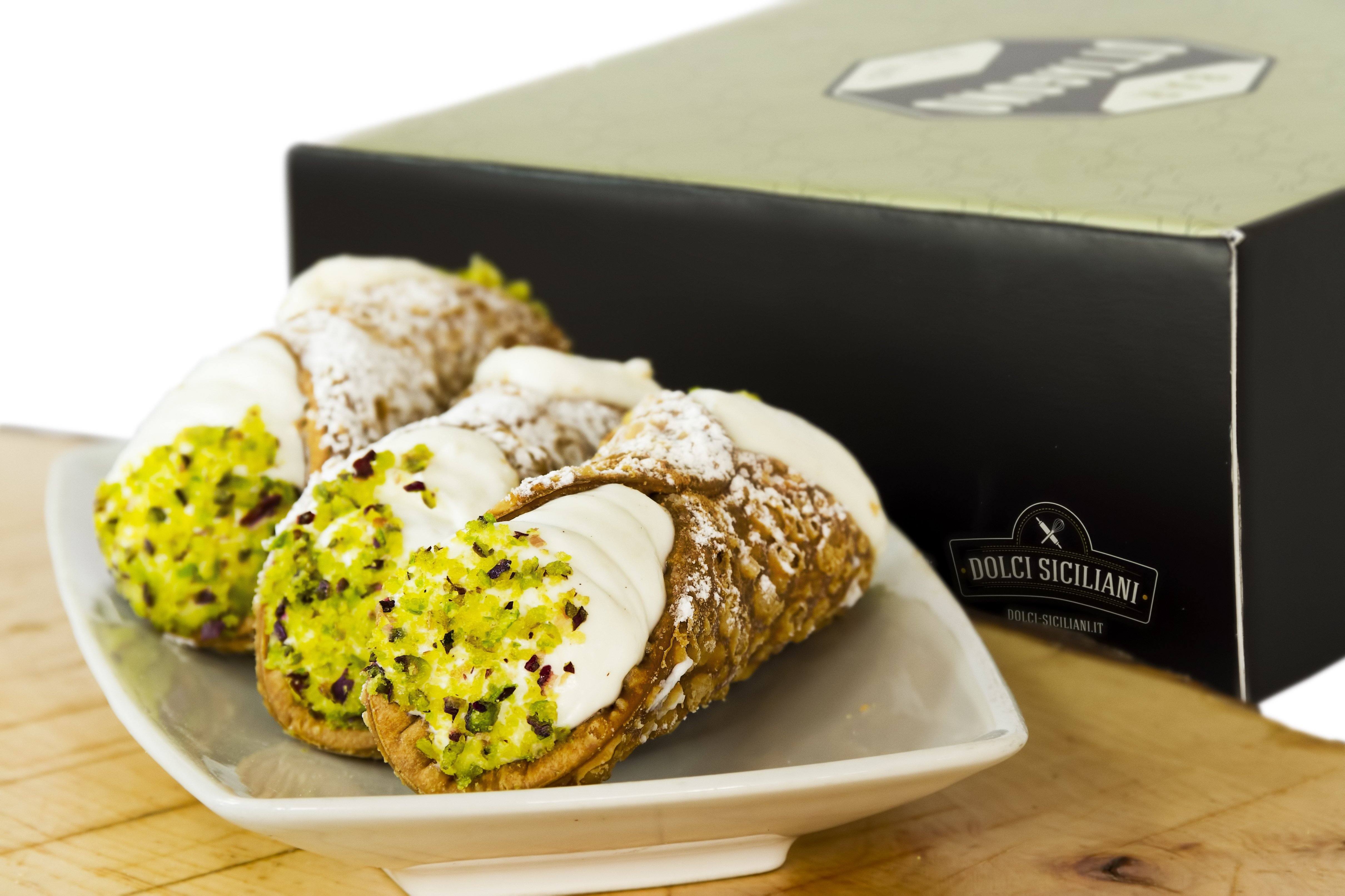His Majesty the Cannoli

A bit out of gallantry we debuted this tasty review in the universe of Sicilian sweets with her: Queen Cassata… What better worthy successor and/or companion could we now elect if not HIM, emblem of Sicilian masculinity, inexhaustible subject of daring and little veiled metaphors, but above all Prince dominating sweet tooth palates... he is the most virile
Cannoli!
Classic with ricotta or chocolate , small or large, Sicilian cannoli cannot miss the fried and crunchy dough wrapper that contrasts the softness of a soft and sweet filling . Then caramelized, pistachio and now even broken down (who knows what Freud would think about it?). Of certainty, beyond its irresistible goodness and crunchiness , only one remains:
each cannolu is scepter of every King.
Dulcis in fundo: The story
The history-legend of the cannolo, just like its original essence, is confused between the meanders of the sacred and the profane, between the serious and the humorous…
It is said that he was born in Caltanissetta, in Arabic “ Kalt El nissa ” or rather “Women's Castle”, which was the place where the Saracen emirs kept their harems, and where the women, during the long absences of their spouses, dedicated themselves to preparing delicious sweets to kill time . Perhaps it was precisely to the thoughts of those expectations that we owe the classic shape of the cannoli, even if other stories tell that it was instead the hands of the nuns of a cloistered convent near Caltanissetta that modeled the first cannoli. And the name derives from a carnival joke which consisted in making ricotta cream instead of water come out of the cannolo ( from cane, an archaic term to indicate a sort of tap) from a trough. To combine the two versions, many argue that when the Normans managed to free Sicily from the Saracens, the harems emptied and many of the women who lived there converted to Christianity and retired to convents, bringing with them some ancient recipes, including precisely that of the cannolo.
Compare provinces
The cannolo was therefore born in Caltanissetta, however it owes much of its fame to the Palermo pastry chefs who have customized the recipe and have dedicated more than one festival to this extraordinary dessert such as the "Sagra del Cannolo Siciliano" in January, and " Cannoli & Friends” in May which take place in the setting of Piana degli Albanesi. However, another famous festival is that of Gesso in Messina, and it would be a crime not to recognize the goodness of Catania's cannoli. The cannoli is actually delicious in every province, but the various provincial schools keep some distance with some differences. The main one is that of the final decoration of the dessert: ground pistachios from Bronte in Catania, unlike Palermo where the ends, according to tradition, are decorated with candied orange peel strips. The traditional recipe is delicious and complex. The dough is based on flour and sugar but the peculiarity lies in the filling of very fresh sheep's ricotta cream, which, especially in spring, takes on an inimitable flavor, thanks to the new, tender and fragrant grass.
Curiosity
1) The Sicilians they usually roll up the cannoli in real cane logs, which abound in Sicily. Sicilian canes generally have a diameter of three to four centimeters and even reach three meters: perhaps the name cannolo actually derives from this.
2) The hypothesis on the origin of the sublime cylinder of ricotta, stimulating for the taste and captivating for the interpretations between the sacred and the profane, is described by the duke Alberto Denti of Pirajno , a lover of gastronomy. In "Sicilians at the table" the duke claims that the cannolo was invented by the skilled hands of the cloistered nuns of a convent near Caltanissetta. To be precise, we read: "The cannolo is not a Christian dessert, since the variety of flavors and the sumptuousness of the composition betray an undoubted Muslim origin".
3) Marco Tullio Cicerone defined it: " Tubus farinarius , dulcissimo , edulio ex lacte factus ", or rather " Starchy cannolo made of milk for a very sweet food " , when he was quaestor in Sicily, in Lylibeum (today's Marsala).
4) The reference to the phallic form refers to the idea of virility and to the generative force of the earth, but also recalls its superstitious value, a symbol used against the evil eye.
Dulcis in furno, the recipe.
Ingredients for the waffles (about ten):
110 g of flour
15 g of butter or lard
15 g of granulated sugar
about 40 ml of Marsala wine or dry white wine
1/2 teaspoon of bitter cocoa
1/2 tablespoon vinegar
a pinch of salt
seed oil
For the stuffing
400 g of sheep ricotta
100 g of candied fruit
100 g of chocolate drops
180 g of sugar
2 tablespoons of orange flower water
Process for pods
Start by preparing the pasta. Make a fountain on a pastry board and pour the butter or lard into small pieces, the sugar, the Marsala wine, the cocoa, the vinegar and the salt. Knead well until you have obtained a homogeneous and elastic compound. At this point form a ball, wrap it in a napkin or plastic wrap and place in the refrigerator to rest for about half an hour. Then work the dough again and let it rest for another 30 minutes, after which you can roll it out into a very thin sheet , using a rolling pin. Cut out squares of 10 cm on each side from the pastry and roll them up on the tin cylinders, taking care to wrap them diagonally, joining one corner to the opposite one and sealing them by brushing the egg white into the joint. When you have rolled up all the cannoli, you can start frying them in abundant boiling oil. Remove the cannoli from the oil only when they have reached a nice golden brown and put them to lose the excess oil on absorbent paper.
Filling process
Sift the ricotta and add the orange blossom water and the sugar, working the dough for a long time with a wooden spoon . When the cream is smooth and the sugar has completely melted, you can add the remaining ingredients, i.e. the chocolate chips and candied fruit. Mix everything well and leave it to rest in the refrigerator for about half an hour.
Final procedure
Fill the cannoli with the prepared cream and, to your liking , sprinkle them with icing sugar and garnish the ends either with cherries or candied orange peel , or with chopped pistachios from Bronte.
Revisited dessert : decomposed cannoli
Recently invented and in fashion in the most chic places, the revisited version of the decomposed cannolo is all the rage . The crunchy crust loses the canonical cannolo shape, to become a simple sheet that covers the ricotta or the chosen filling in several layers. Surely this version allows you to speed up times and simplify the preparation. In fact , it is more practical to roll out the dough, cut it out and fry it, rather than wrapping each single cannoli. Furthermore, the elaborate name allows the classic cannoli to give itself a little more air.






Ricetta eccellente provo a farla io sono calabrese vivo al nord e seguo tanto la vostra pagina grazie della ricetta
Leave a comment